The Power Of X
A simple yet powerful lighting technique anyone can master in under a minute.
A simple yet powerful lighting technique anyone can master in under a minute.
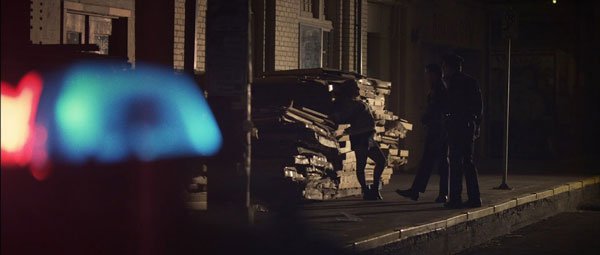
If you had 48 hours to shoot, light, grade, & deliver a short film, how confident would you feel that you could pull off high quality visuals? Now what if you only had a small crew, a small lighting package, and at one of the locations you had no power- as in NONE … This was exactly the situation that I found myself in for the 48 hour film festival, and I still walked away winning Best Cinematography, and our film took first place!
In a recent interview with Aviv Vana, of Big League Film School, I went into specific detail about the how and why behind the choices that I made in lighting and framing the opening scene and the hallway scene of the film. You can watch the 48hr film in its entirety in the main tab below, or see select frame grabs, and read the entire transcript of the interviews if you would rather read then watch. 🙂
Have you every been under a tight deadline with a only a handful of resources to call upon? If so, how did you overcome the situation?
Stay On The Smart Side Of Filmmaking!
– Ryan E. Walters.

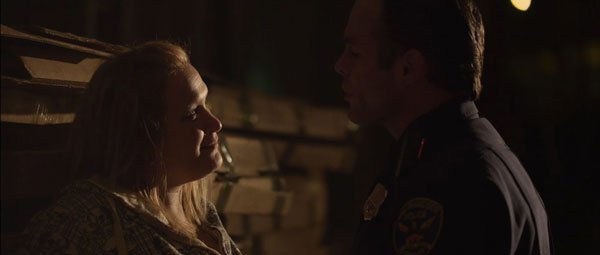
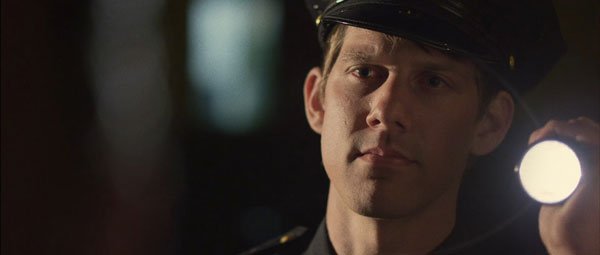
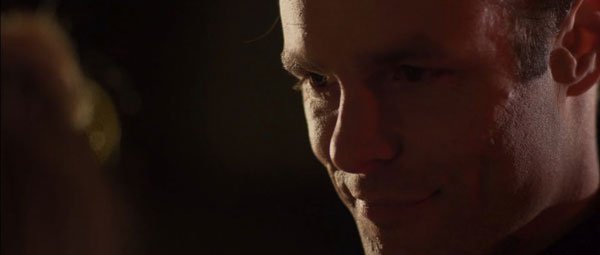
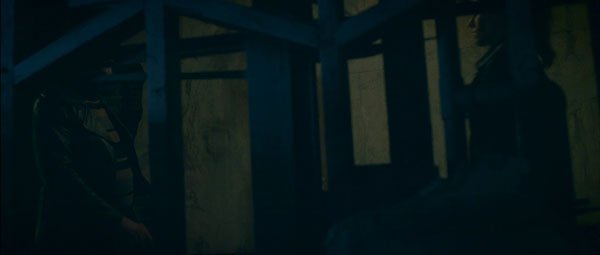
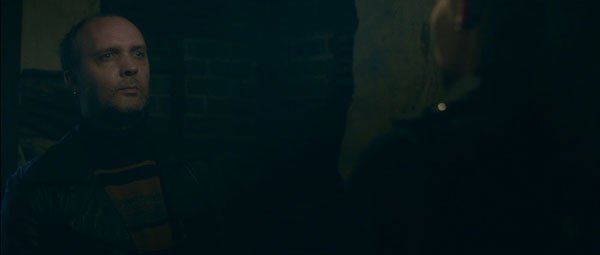
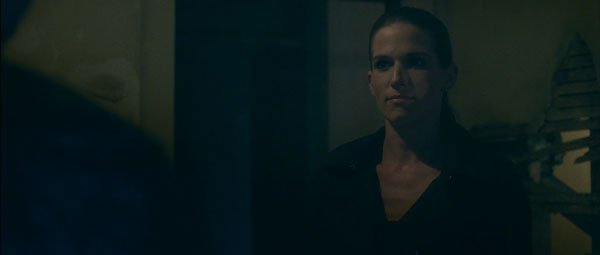
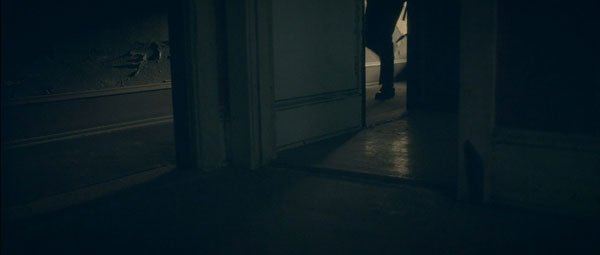
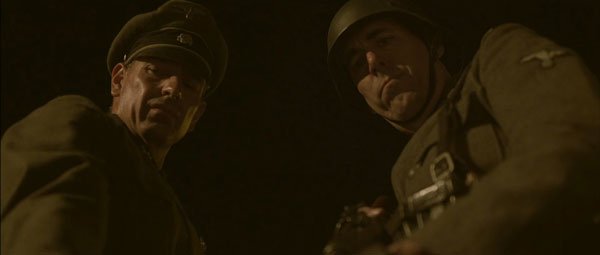
Aviv: Welcome everybody, today we have Ryan E. Walters, from ryanewalters.com, this guy is doing good things on his blog, I love his blog it just has so much good information. And you have to hit it up if you want to learn all kinds of things about cinematography. He doesn’t hold back over there. Today, we’re going to focus with him on a piece that he did for the 48hr film festival. And he is going to break it down for us- the lighting, a lot of the decisions that he made, what equipment he used. In this first video we focus on the lighting of the opening scene. And also don’t forget to check out the other videos. I split them up to make it easier for you to watch and go to directly to whatever it is that you are interested in most. And also for sharing purposes, you don’t have to share a 45 minute video, you can share just the one that speaks to you. But the other videos talk about some of the lighting in the hallway, we talk about Gaffers, and how to work with Gaffers and also what camera would Ryan buy if he had a choice. Because there are so many of them right now. So let’s dig right into it and enjoy and share it with everybody.
Ok, Ryan, thanks for jointing us today, welcome to the show, Big Leagure Film School, it’s truly an honor to have you on. I’ve been following you, I see your blog, and you’re doing amazing stuff. Thanks for joining us today.
Ryan: Thanks for having me on. It’s an honor to be here.
Aviv: Your blog, one of the reasons I wanted to have you on besides the fact that I’ve seen you work and there is so much to learn from it. Every post that you put on is jammed packed. There is no, here is a couple of paragraphs and that’s it. It always keeps on going.
Ryan: Laughs.
Aviv: It’s always so though, and leaves me not wanting for anything. It’s like, every topic is fully covered, and it is so great to have that type of information being put out there.
Ryan: Good, I’m glad that you appreciate it. Basically, with my blog, I put out the content that I wish I would have had when I was first getting started. I tend to have longer posts. But it is the stuff I wanted when I started.
Aviv: Right. A lot of the stuff I see out there seems to be fluff. It is part of the reason why I’m doing this show. Is because I was having a hard time getting to the nitty gritty of how things are being done. So I want to bring on people like yourself, and not discuss just general cinematography, but more how do you achieve certain shots. So with that in mind, lets just dive right in and share with the folks some good stuff.
You have a piece, why don’t you tell us about it, that you did for the 48 hour film festival, something like that. Why don’t you take over.
Ryan: There is a film festival called the 48 hour films festival. And basically you have 48 hours to write, shoot, edit, grade, and deliver a film which is no longer then about 6 minutes I think. Everyone meets up at a location where you pull form a hat the genre that you are going to be given. And then you are given a character name, a line of dialogue a prop that you have to use, and then you have to deliver that final film in 48 hours otherwise you loose.
Aviv: Laughs.
Ryan: This last year my team came in first place, and then I won best cinematography.
Aviv: Okay, wow. So that right there, there is a certain skill set that a cinematographer has to have to be able to do something under such pressure. Time pressure, you don’t get to really location scout, all this stuff is out the window. I was actually going to ask you about location scouting, which I think is probably very minimal.
Ryan: Actually, that’s one thing that you can do before hand. While you can’t write anything, shoot anything, or edit anything, they do let you assemble your crew before hand and they do let you choose your locations. So you can have that stuff locked down. But everything else you have to figure out as it is given to you.
Aviv: How are you working on a location before you know what your story is going to be?
Ryan: Laughs. That is where reverse engineering is really key to turning something around in 48 hours. Basically, we got together as a team and figured out these are the resources we have and how are we going to take advantage of them. So as soon as the genre was given to us, the two writers, AJ & Shawn started writing stuff around what we had. So it is just about working backwards.
Aviv: Ok, interesting. Let’s dive right into it. This pice is some cops getting a tip from a lady of the night and they follow that lead and it turns into something Sci-Fi. Out of no where they get zapped into history. That first opening scene, basically we are dealing with a lady of the night, as we call it. She is out there in the dark, a street ally, and the cops are pulling her over and having a discussion with her. So maybe you could walk us through that scene, where the lead cop is discussing, having that interaction with her. And how to you go about lighting that in a way that looks realistic, as opposed to some bright light coming out of no where. And technique wise, how did you go about lighting the faces so that their lit and not the whole background? Obviously, you have to do a lot of cutting of the light. Technique, walk us through some of that. It is probably second nature to you, and not for a lot of people.
Ryan: I really enjoyed that scene. Because there was a bit of ingenuity that went into it. We originally had a cop car available to us. But the cop car couldn’t drive to that location. So we ended up taking the light bar off of the car, and using one of our friends cars. We just put it right on top, and it was about creatively framing it out so that you can’t tell it isn’t a real cop car as a foreground element. From there is was finding a composition that worked well. The location we shot at was actually our home base, and as soon as I had a good composition framed up that I liked- it has some boxes and crap everywhere, some nice texture and grit to the image … basinal with only 48 hours available to me, it was about reinforcing the light that is already there. It’s about trying to work as minimally and as fast as possible while still getting some great content. So for example, in the wide shot all I have is 1k open face, and I think the other light was a 750w source 4. As soon as I had the shot framed up, there was already a street light about a block and a half away. You could faintly see it on the actors, and that gave me the motivation for where the light was coming from. So from there it was a matter of getting about 100’ of extension cord and running it out and setting it up.
Aviv: Let’s get real technical, tell us the difference between an open face and the source four, what are their differences, and what do they accomplish, when do you use them, and how did you use them in the scene?
Ryan: The open face just puts out a ton of light, it is not very controllable. It essentially blasts light everywhere. There is no era glass or anything to cut it down. And the source 4, is also called a rock ‘ roller light because a lot of times you’ll see them at music concerts. It is very controllable, it has blades on the inside of the the tube that you can use to really cut and define the light. So it is a lot more controllable. And the reason why I chose those lights is because the light had to be far enough away so that it wasn’t in the shot. Which is why I took the source 4, because it has a lot of punch to it. So I used that to get the main highlights and punchiness you see in the image. And then I took the 1k and used it as a general overall fill. So the spread and falloff that you see is what the 1k is doing.
Aviv: So let me recap. I don’t know if I lost you there. Two lights?
Ryan: Yep, two lights.
Aviv: So the 1k is more just giving the overall, bringing the levels up of the scene?
Ryan: Yep, exactly.
Aviv: But surely you have to keep it off … I see it concentrated on the boxes that the lady is resting on, and some on the wall behind her. Not so much on the floor, a little on the floor- you see what I’m saying? So that is probably crucial that your not blasting the floor.
Ryan: Yeah, that main bright area there is coming from the source 4. Both lamps are rigged to the same beefy baby stand. Which is a bigger stand then a C-Stand. We had two lights rigged to that. So the source 4 is what is pounding that, allowing me to keep it on the boxes and keep it off of the floor. So it is giving me that precise control there. That I don’t have with the open face. And the open face is panned a little bit stand right. And that is what is helping to bring out the detail on the wall, and as it falls off into the background there.
Aviv: I see.
Ryan: So you have one light point here, and one light a little off axis. And it is the off axis one that is the open face.
Aviv: Are you doing any sort of flagging or anything?
Ryan: I started to, but it was taking to long, so I lost the flag.
Aviv: What were you truing to accomplish with it?
Ryan: Basically, just a little more shape. On the bottom of the frame there you can see that the light extends on the ground there, and I wanted to feather that off a little bit more. I felt it was a little to bright. I wanted all of the attention to be on the silhouettes that are created by the people as they stand against the boxes.
Aviv: Right, so the source 4, it’s job was what in the shot? Just to really hone in right on those boxes?
Ryan: Yep.
Aviv: Is that what it was? Because they are not very lit. They are almost silhouetted kind of …
Ryan: Yep.
Aviv: So you’re focusing it more on the wall and the boxes that she is leaning up against?
Ryan: Yep. Like I said, in this situation it is about being creative with the tools you have to tell the story within the time limits. And so we didn’t have any big lights on us, and I knew from reading the script that this was going to be a more moody piece anyway. So instead of trying to make a couple of lights do more then they could, what I wanted to do was to separate out our characters.So if I could create layers of light and shadow, and separate out the talent, that would be a more effective use of the tools rather then trying to use two lights that are underpowered and too far away.
Aviv: That’s genius. I think that was a genius move here because I think the average person would probably try to pull the characters out so that you could see them. Try and light them a little bit and let everything else fall away. But you are saying you didn’t have the tools to do that.
Ryan: Yeah, we didn’t have the lights, and even if we did have big enough lights, at that location we only had two 15 Amp circuits, so we had next to no power. So we couldn’t have used them anyway.
Aviv: Let’s move along to some of the close ups, which I really love because you can really see their faces but in such a subtle and natural, believable, in the scene kind of a way. But what I’m curious about before we go to that is how did you plan this scene as far as the shooting is concerned? Did you do all the wide shot? I’m not even sure if there is more then just one. And then move in to the close ups. Which is what you probably did. And how long did it take to break down and go to the next shot. And how did you know how long it would take to do that because you are on such a time crunch? Walk us through some of the logistics that you had to go through to accomplish it?
Ryan: Yeah, as I have shot more and been under more pressure, I’ve really learned to keep things as simple as possible, whenever practical. And with 48 hours, you have to be thinking simple. Otherwise you are not going to have a product to turn in at the end. So we did shoot all of the wide stuff first, which was just that one wide shot of them. The actors ran through that scene. And then for me it was a matter of watching the actors perform and figuring out these are the beats we have the in the scene, so this is the coverage we need to get in order to make it edit together. So after the wide shot ran, then it was a matter of tweaking the lights to be as efficient as possible. I didn’t do a whole break down and relight. It was just repositioning the light. The Gaffer went over to the light stand and walked it in some, and moved it camera left a little more, so that I could get more of an edge on the talent.
Aviv: Very interesting. Let’s go to the next shot where we are seeing a medium shot- there are two cops there, but the shot where we see the cop and the lady talking. So you are saying you didn’t move the lights at this point? I’m blown away by that. Is that right?
Ryan: They move a little bit. I didn’t break them down and relight. I moved them over about 5 or 10 feet. To get a little more of an edge in there.
Aviv: I’m looking at the shot right now at about 34 seconds where we see her lit more, her far side, and he’s pretty much not lit.
Ryan: Yep.
Aviv: you’re still using that open source directly on him, there’s no diffusion going on, there’s no bouncing, is that right?
Ryan: Yes, the only time I use a bounce was on the younger looking officer. With our three characters, our lead officer is a bit of a shady, underhanded, crooked cop, and then we have our lady of the night. So I wanted to reinforce their more crooked appearance by being less friendly with the their lighting.
Aviv: Very nice.
Ryan: And then our younger officer who is more innocent, and just out on the job, I wanted to soften him up a little bit. So with his light, I took a 4’x6’ California SunBounce . It is a big collapsable white card essentially. And I used that to bounce light back in on him.
Aviv: So you are actually still using that open source and you are just bouncing it back into him.
Ryan: Yeah.
Aviv: Wow, that is so efficient. That is cleaver. I’m actually surprised. How far are these lights? Because with such powerful lights you can’t be too close.
Ryan: Yeah, which is why I selected them. We had two 15 Amp circuits, which is just enough to run those two lights. So in the wide shot, if my memory serves me correctly I think they were about 20’ away. And then for the close ups, I moved them over about 5 feet and then walked them in to raise up the intensity just a bit more.
Aviv: Gotcha. Now for when you go to the close ups, the individual closeups. Let’s say fro the crooked cop. Is that again pretty much the lights doing little minor adjustments to hit them just as much as you want? What is going on there? Your moving him? Obviously at this point you can cheat.
Ryan: Yeah. And that was key both with the crooked cop and the more innocent cop. As we flipped around for their coverage I was looking for frames that had some detail in the background. Even though it is really out of focus, I didn’t want it to go completely black. So we would shuffle them down left or right depending on what the background was to give it some depth and texture. And the fill on the crooked cop is actually coming from the cardboard boxes. Which I liked, as it gave him a little bit more of an edge, and makes the color feel a little bit off. It was about embracing it, and making it work.
Aviv: Wow, before we move on, that was a lot on lighting, and I go a whole lot out of that. You can basically take a very minimal setup and use it to your advantage. I do a lot of lower budget stuff where you don’t get to scout, show up on the day, this what you have, and you got to do this whole thing in one day, where it should be two days. So to hear all that, that is a lot of good lessons there.
Aviv: Let’s talk a little bit about framing, composition, you know, to me that’s what it all come down to, right, two things lighting & composition that’s it. You want to put all cinematography into two words that’s what it is basically. So why don’t you tell us a little bit about the wide shot, when you’re there, you’re doing these minor things, and then oh, there it is, got it. And so now looking at the final image, maybe you can point out to the audience some of the some of those things that you nailed after finally knowing that you framed this right. So That they can try and repeat it potentially.
Ryan: Yeah, so going back to the wide shot, for me my goal was to define the space, to tell time, location, and give it some atmosphere and define the people. So the first problem we came across was the cop car didn’t work. Since we couldn’t show a wide shot with the cop car, I needed to figure out how convincingly show a cop car that doesn’t work. for me it was about finding somewhere in the frame to put those lights that makes it believable that it’s a cop car. Which is why I put them down in the lower left hand foreground there. And the second part was defining the space. If we went any wider the frame would have felt to empty, because what you see there in the frame is pretty much the only interesting bits. The rest of it is dark alleys and we didn’t have the lights or the time to shape more details in the background.
Aviv: I think you went one step ahead without every realizing it because it is obvious to you. It’s basically you saw these boxes and said that’s it, that’s our scene that’s what it is going to all be centered around. And that is what you had to work with. Once you saw that, you said, now I have to frame based on that element.
Ryan: Yeah, exactly.
Aviv: Ok, maybe give us a little bit more. I’m seeing some things that I’m trying to get you to say instead of me saying it. Basically, you are not shooting this profile, and you are also not shooting it strait on. I;m seeing that sidewalk go off into the distance. So maybe you can tell us a little bit about that.
Ryan: One of the things I try and do, especially on lower budget projects is to make the world feel bigger then it actually is. And one of the ways I try and accomplish that is to hint at things that are outside of the frame. There is a tiny little light that is way back in the background, that is a part of the shot, and that is a light off a bridge, and there are some other lights in the distance that don’t play strongly, but suggest that there is more to this world. There is more going on. So when I set it up, I wanted to imply more depth. So that is why I set it up at an angle, to make it more dynamic and to suggest that there is a world that goes on out side of this frame that we are seeing.
Aviv: Ok, that’s awesome. When I see it, I think the geometer feels right. It’s going off into the distance. But I really like the way you just put that in the context of story, which is really what it is all about. And maybe those are somethings I do subconsciously without realizing. But that’s great- it just goes on, there is something out there, you know it as a viewer, that this place is bigger then the little bit that we are seeing. And that’s what this did, that’s great. How about further along in this film, the cops get a tip from her on where to go to find the bad guy and they end up in this building down a hallway. And I’m just visualizing this hallway, you got your hand on it, and it is the most ridiculous thing to work with ever. Like you know cinematographers nightmare. This thing is so ugly, you don’t know what to do with it. So, I think the walls are white. How did you handle that, because that is like the biggest challenge that I come across all the time- white walls, and everything is lit. You start by turning everything off and you start with a blank slate. How did you dead with this- tell us a little bit about that.
Ryan: That part was all orchestrated during the location scout, a day or two before. We found we had this location available for us. It was a great location as far as textures go, it was an abandon hotel. So there were a lot of good texture in there, later in the film you see them go into this room that is essentially torn apart. So I liked the texture bit of it, but there was a lot of the hotel that was just white walls, really boring, really not interesting. So when I was looking at it, I was figuring out what parts of this are interesting to see. If I just blast light everywhere it is going to be white, it’s going to be boring, it’s not going to be engaging for the story. the whole story is a bit of a mystery, so I can actually play up the darkness because we are not quite sure what is going on. And to add to the mystery, the more you don’t see, the more it propels the story forward. As I scouted the location it was about finding the bits of the location that looked good, or at least caught my eye and then lighting those areas.
Aviv: First off, what where some the challenges with lighting this hallway. Is this during the day, is there light coming in, did you have to block light out, or was it at night and did you have a blank slate, what was that about?
Ryan: We shot it at night, so that was really helpful. But because it was an abandoned hotel, we had no power. So we had to bring in, one of our friends had a little put-put generator, I think it was a 2,000 watt generator. So we didn’t have a whole lot of power. So what we did, while we were shooting the previous scenes of the cops arriving, I had the Gaffer and the crew run 300 or 400 feet of cable around that location. We were up on the 3rd floor, and we could only safely get the generator up to the second floor.
Aviv: Safely, huh? (Laughs)
Ryan: Where the fire escape was, is where we placed the generator. We didn’t feel quite safe placing a generator inside an old wood filled hotel. (Laughs)
Aviv: Tell me about it. (Laughs)
Ryan: So it was really about running a lot of cable. And then we used lights form home depot, or any hardware store, there are these work lights that run off of extension cords and they drop down and all it is is a socket.
Aviv: You mean those square ones that have a grid around them?
Ryan: Yeah, exactly. So that is what we used for that hallway.
Aviv: For the whole hallway shot? That is done with those lights?
Ryan: Yep.
Aviv: I’m looking at this hallway shot, I see them coming through, I see two flashlights. I think a light in the back, kind of …
Ryan: Oh, yeah, in the back far side of the hallway, I have another work light, it is not a movie light. So it is a little clip light that has a 200w bulb in it. That is bringing out some detail in the background. But as far as their walk down the hallway, those pools of light, are just coming from that strip of work lights that are hanging from the ceiling.
Aviv: I see, that’s what I didn’t understand. So you have on the ceiling … I’m only seeing one … but your saying there are a couple of sections . I would have to look through all of the hallway shots. You are saying there are one or two work lights coming from the top and they are able to light just a little sliver of the hall?
Ryan: Yep. Exactly.
Aviv: Did you have to snoot, or did it just naturally light it like that?
Ryan: It just naturally fell that way. And when I say them on, I just went with it. One we didn’t have a lot of time, and two I actually liked how ended up falling on the walls.
Aviv: Now the far light, is that on the floor? Pointing towards the corner, is that what it is?
Ryan: Yeah, exactly.
Aviv: I see. And then what are you doing in the camera? Because unless you have dimmers, it seems like it might be to bright? Are you knocking down a lot of the light in the camera?
Ryan: We actually through some dimmers on those lamps to control them. And since they are all on the same extension cord, then one dimmer was able to handle it. Because each bulb in there was … actually, I’m not sure which bulbs we ended up using, we had three different bulbs there – a 100w clear, 100w soft, 60w clear bulb, and I know we changed them out a couple of times. I think it might have been the 60w clear bulb. It was one of the two clear bulbs that we used.
This site uses cookies. By continuing to browse the site, you are agreeing to our use of cookies.
AcceptHide notification onlySettingsWe may request cookies to be set on your device. We use cookies to let us know when you visit our websites, how you interact with us, to enrich your user experience, and to customize your relationship with our website.
Click on the different category headings to find out more. You can also change some of your preferences. Note that blocking some types of cookies may impact your experience on our websites and the services we are able to offer.
These cookies are strictly necessary to provide you with services available through our website and to use some of its features.
Because these cookies are strictly necessary to deliver the website, refusing them will have impact how our site functions. You always can block or delete cookies by changing your browser settings and force blocking all cookies on this website. But this will always prompt you to accept/refuse cookies when revisiting our site.
We fully respect if you want to refuse cookies but to avoid asking you again and again kindly allow us to store a cookie for that. You are free to opt out any time or opt in for other cookies to get a better experience. If you refuse cookies we will remove all set cookies in our domain.
We provide you with a list of stored cookies on your computer in our domain so you can check what we stored. Due to security reasons we are not able to show or modify cookies from other domains. You can check these in your browser security settings.
We also use different external services like Google Webfonts, Google Maps, and external Video providers. Since these providers may collect personal data like your IP address we allow you to block them here. Please be aware that this might heavily reduce the functionality and appearance of our site. Changes will take effect once you reload the page.
Google Webfont Settings:
Google Map Settings:
Google reCaptcha Settings:
Vimeo and Youtube video embeds:
You can read about our cookies and privacy settings in detail on our Privacy Policy Page.
Privacy Policy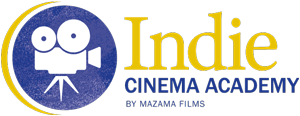
Leave a Reply
Want to join the discussion?Feel free to contribute!